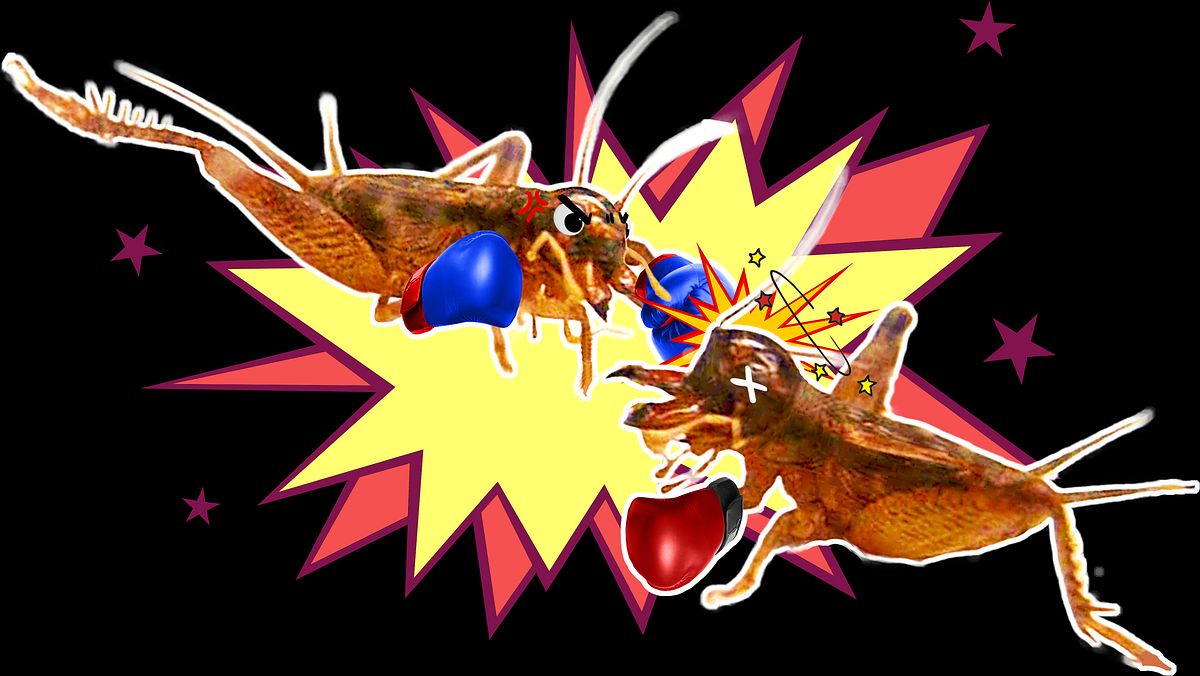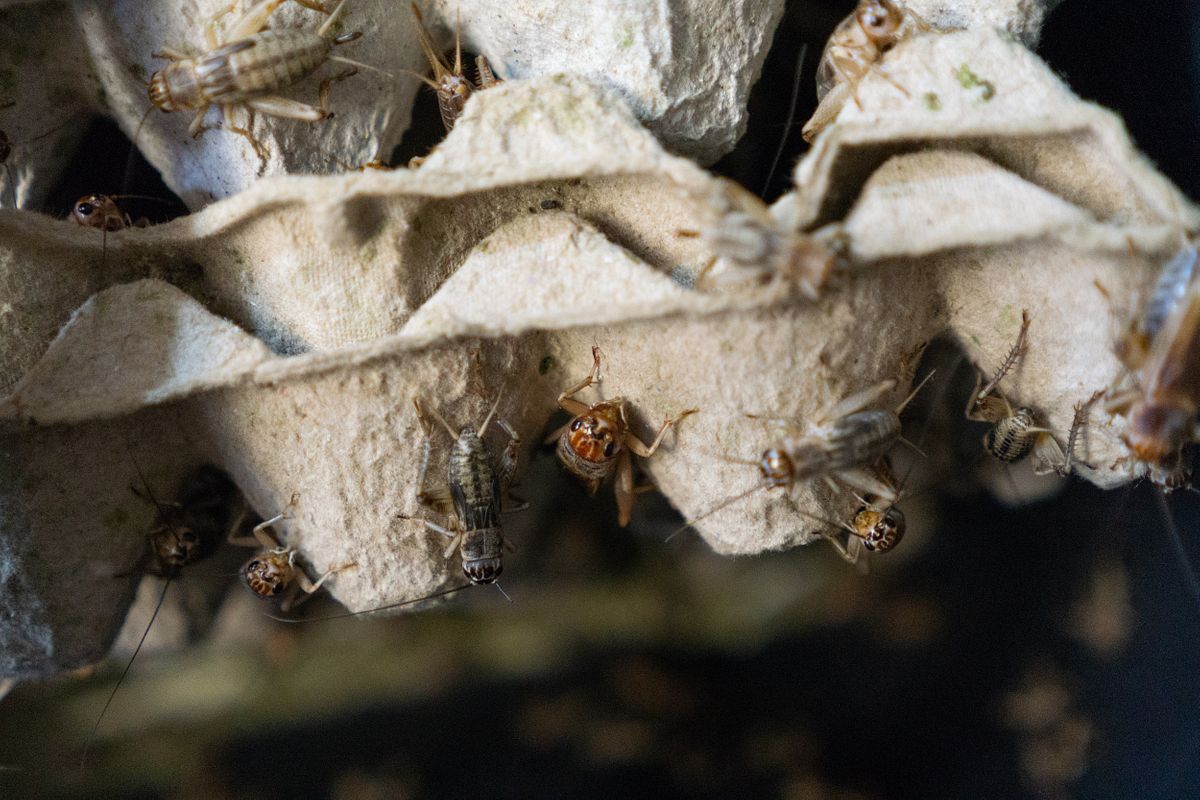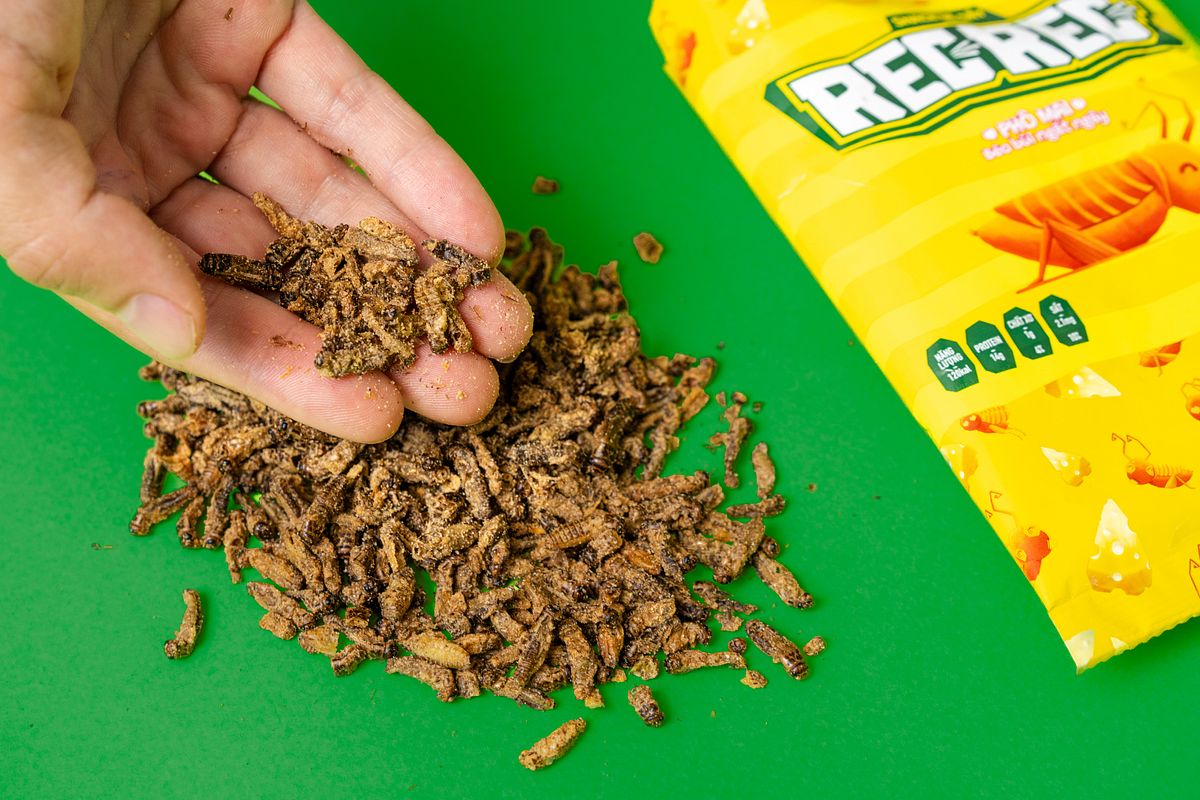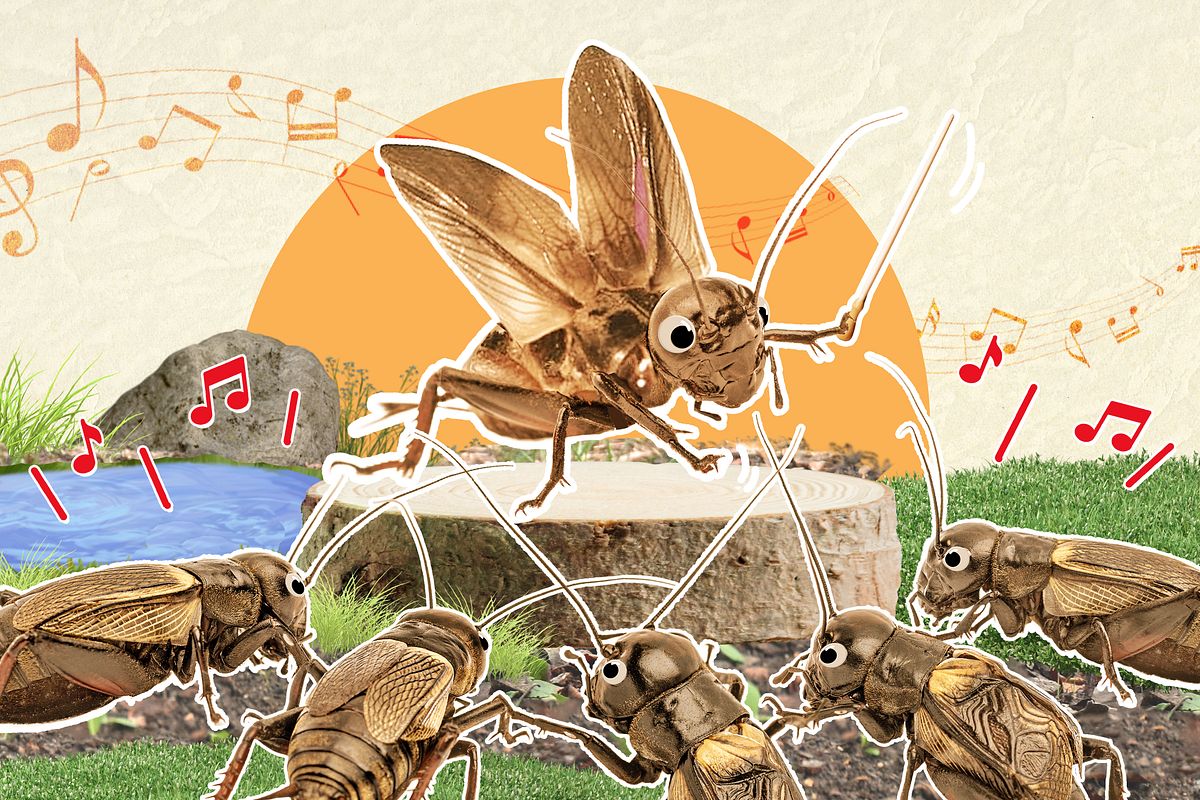Cricket song. You read the words and immediately hear the chirping. That thrilling trill of strummed air. Humans have been hearing that quivering echo since we first came into existence. And over time, we’ve attached a variety of meanings to it and the creature that makes it.

Image via Kim Đồng Publishing.
Perhaps the most overt association people have with crickets in Vietnam is Tô Hoài’s Dế Mèn Phiêu Lưu Ký (Diary of a Cricket). The beloved tale and holder of the distinction of “Vietnam’s most translated story,” is an imaginative fantasy that follows a cricket as he goes on adventures. In the process of escaping from the Kingdom of Frogs, battling a menacing mantis and very nearly succumbing to an army of ants before restoring peace to the land, he learns numerous life lessons including the importance of resilience, generosity, justice and renouncing violence. The book’s simple moral teachings make its inclusion in school curriculums obvious, but its ability to depict a charming magical world imagined from familiar fields helps explain why you’ll find it in bookshops and toy stores throughout the country.
The most overt association people have with crickets in Vietnam is Tô Hoài’s Dế Mèn Phiêu Lưu Ký, a beloved tale and holder of the distinction of “Vietnam’s most translated story.”
Diary of a Cricket contains very little reference to the cricket’s ability to chirp. However, for me, it is very much a sound-evoking narrative. Several years ago, the HBSO staged a special performance of the story as interpreted by the full orchestra. So while I know what sound a cricket makes, when I see one springing from grass blade to grass blade, I catch whispers of Phạm Vũ Thiên Bảo’s viola prancing atop cello notes.
Truthfully, a cricket doesn’t make noise all that differently from the way one plays a string instrument. Crickets stridulate. That's the technical term for producing sound by rubbing two body parts together. Male crickets rapidly drag rough patches on the undersides of their large forewings across each other. Their scraper rasped across their file is similar to rubbing your finger over a comb. They do this to attract mates and then incite copulation, as well as threaten rival males and intimidate predators. Nature thrives on gender imbalance, and thus only male crickets have the ability to make noise, leaving the females as silent as women in Christopher Nolan movies.

Thinking about Diary of a Cricket may evoke nostalgia for childhood, but the association goes deeper than fond recollections of a story read in youth. In economically leaner and technology-limited times, cricket fighting was a popular hobby for kids throughout the country. They would spend afternoons digging around in the dirt to capture the biggest, meanest-looking specimens. Groups of friends would gather to erect makeshift rings for the prizefighters. Tussling, tugging, thrusting and biting, thankfully the bouts were rarely deadly with the loser choosing to retreat before being mortally wounded.

Photo via Tuổi Trẻ.
The activity’s association with an era that feels increasingly simpler with each passing year is exemplified in Phạm Hổ’s 1957 poem ‘Những ngày xưa thân ái’ (Tender and Beautiful Days Gone By) and translated by David Payne. The poem includes the stanza:
Tender and beautiful days gone by,
he has forgotten them all
but I remember still:
the fields of my village, huge ocean of rice
the morning dew, white pearls by the roadside
us two
our school books clasped together
our clothes crumpled by sleep
our bare feet moving together side by side
in swinging hands the handful of rice
our mothers ground in a leaf of areca palm
our wide conical hats with their bands too long
in a pocket a matchbox, a cricket inside…
The pastime of fighting crickets hasn’t disappeared completely, however. It remains popular in rural and impoverished areas. And even if someone has long ago re-trained their cricket-digging fingers to scroll social media, their eyes are liable to light up when reflecting on it. Bliss emerges amidst explanations of how tying hair to a fighter’s leg and spinning it around would compel a favorite cricket back into battle.
Interestingly, scientists recently discovered that the secretion of nitric oxide in the insects’ brain is responsible for determining when a cricket decides to stop a fight and flee. This is just one of an incredible number of scientific studies that have been performed on crickets generally, and their songs in particular. We now know how their calls have evolved, the ways in which they rely on geographic features for sound amplification, and even the caloric impact of making such songs. Because of their size and ease of care, crickets are proving valuable for research that extends to other species as well. Scientists use them to conduct a variety of experiments to learn more about genetics, stem cells and brain development that impacts humans and other organisms.


Photos by Michael Tatarski.
One reason there are so many crickets around to study relates to a newly emerging association people have with the cacophonous sound of a trillion cricket cries: cash. Indeed, the insects have been identified as a cheaper and more environmentally sustainable protein source than beef, pork or chicken. Vietnam is home to several companies harvesting crickets on an industrial scale for protein powder. Meanwhile, several companies here have introduced snacks that leave crickets in their full form and simply dash them with some seasoning such as wasabi or cheese salt. Saigoneer has tried the snack crickets, inviting a new sound to associate with crickets: the crunch. Grassy, earthy, and hay-strewn — the flavor has left our office very much divided.

Photo by Alberto Prieto.
So what does a cricket call make you think of? Hard work, tenacity and moral uprightness? Carefree childhood days? A more sustainable future cuisine? A joke you told that landed utterly flat? Loneliness when heard as you sit by yourself on a desolate evening? Malicious interrogation as it berates you from an unseen nook outside your backdoor for nights on end? Maybe it’s none of these. And maybe it shouldn’t be. Maybe we shouldn’t burden crickets with our human metaphors and self-important attachments and instead allow them to be simple, singular insects, as pled for in the translation of a Lâm Thị Mỹ Dạ poem:
So please just let me be a cricket
Singing nonsense words in the silent grass
Watching stars as my song echoes through the field
Drinking in the sweet sun like honey
Please just let me be a cricket.
















